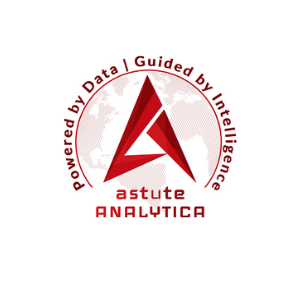Blockchain
Groundbreaking rules published to enable rapid resolution of blockchain and crypto legal disputes, as worldwide smart contract market expected to reach $345.4 million by 2026[1]

The UK Jurisdiction Taskforce of LawtechUK, chaired by Sir Geoffrey Vos, Master of the Rolls, has today published its Digital Dispute Resolution Rules designed to enable faster and more cost effective resolutions to legal disputes relating to novel digital technology such as crypto assets, smart contracts, and blockchain applications, and foster confidence amongst businesses in the adoption of these technologies.
The use of these technologies in business has rapidly gained in popularity in recent years. JP Morgan, for example, is just one of many large-scale corporations already regularly taking advantage of the use of smart contracts (self-executing contracts run on blockchain technologies that automatically process transactions without the need for a third-party). The business benefits of smart contracts are wide-ranging, including enhanced security, improved efficiencies, and cost reduction in the implementation (and automating performance of) contracts between parties.
However, until now, there has been little consistency in how legal disputes relating to these types of technologies should be resolved, leading to lengthier and more costly processes.
Drafted in extensive public and private consultation with lawyers, technical experts and financial services and commercial parties, the Digital Dispute Resolution Rules published today are designed to facilitate the rapid and cost effective resolution of disputes arising in the context of these technologies, and to foster industry confidence in their use.
One important feature of the Rules is that they allow parties to resolve their disputes by an arbitrator, rather than by a judge in court (which can be a more time-consuming and costly process). They have also been drafted to provide maximum flexibility to adapt to as yet undeveloped technologies, and to reach a resolution to disputes quickly and efficiently by arbitrators with appropriate technical expertise and enabling on-chain implementation of decisions.
The UK has been at the global forefront of developing the legal infrastructure to support the deployment of these nascent and evolving technologies. In November 2019 the UKJT published its well-received legal statement on the status of cryptoassets and smart contracts under English and Welsh law. The legal statement was a significant step by the UK towards legal certainty for blockchain technology and crypto assets. Furthermore, English law provides an established and familiar framework by reference to which rights in respect of digital technologies can be effectively established and enforced, and has an impressive track record of dealing with and adapting to technological developments.
Master of the Rolls, Sir Geoffrey Vos, chair of the UK Jurisdiction Taskforce and LawtechUK Panel member, commented: “I am delighted to welcome the publication by the UK Jurisdiction Taskforce of the ground-breaking Digital Dispute Resolution Rules. International business is rapidly adopting the use of digital documentation and on-chain smart contracts. The Rules aim to provide a process for speedy and cost-effective resolution of disputes originating digitally. They will hopefully give global businesses greater confidence to adopt and utilise new digital technologies.”
Jenifer Swallow LawtechUK Director at Tech Nation, comments: “Analogue ways of doing business will be widely restructured and digitised in the coming years, increasing efficiency and transparency. The smart contracts market alone is set to reach $345.4 million by 2026. Methods of dispute resolution must keep pace. The Digital Dispute Resolution Rules are a step change in that evolution and in enabling wider confidence and adoption of these technologies – underpinning those readily-available today and capable of adapting to those yet to be developed. This is an exciting next step in the UK’s leadership at the forefront of business, law and technology, and also demonstrates how simple legal processes can be.”
The UKJT will keep a close watch on how the Digital Dispute Resolution Rules are used, and will aim to consider whether further development or revision would be valuable within the coming year, based on user feedback.
The Digital Dispute Resolution Rules
The Rules are available for download here.
UK Jurisdiction Taskforce and LawtechUK
LawtechUK, a government-backed initiative within Tech Nation, is established to support the transformation of the UK legal sector through technology, for the benefit of society and the economy. Established in 2018 by the Secretary of State for Justice, the LawtechUK Panel, then the Lawtech Delivery Panel, are a group of leaders and experts from the public and private sectors working to achieve that objective and acting as the advisory board to LawtechUK.
The UKJT was established by the Panel as a taskforce to demonstrate that English law and the jurisdiction of England and Wales together provide a state-of-the art foundation for the development of distributed ledger technology, smart contracts and associated technologies.
The members of the UK Jurisdiction Taskforce (UKJT) are:
Sir Geoffrey Vos, Master of the Rolls and Chair of the UKJT
Lawrence Akka QC, Twenty Essex
Sir Nicholas Green, Chair of the Law Commission of England and Wales, as an observer
Richard Hay, Linklaters LLP
Peter Hunn, Accord Project
Mary Kyle, City of London Corporation
Matthew Smith, Financial Conduct Authority
Sir Antony Zacaroli, Justice of the High Court
The drafting team:
David Quest QC, 3 Verulam Buildings
Lawrence Akka QC, Twenty Essex
Anne Rose, Mishcon de Reya
Dorothy Livingston, Herbert Smith Freehills
Rory Conway, Linklaters
David McIlWaine, Pinsent Masons
Blockchain
Simplify Labs Expands Educational Outreach with Monthly Crypto Webinars
Blockchain
Blocks & Headlines: Today in Blockchain – May 21, 2025

In an era defined by rapid innovation and regulatory shifts, today’s blockchain briefing spotlights five pivotal developments: enterprise-grade data integration, municipal crypto pilots, state-level policy hearings, AI-powered token growth, and secure communications on a public ledger. Across these stories, three key trends emerge:
-
Enterprise Adoption & Data Integration
-
Government Experimentation & Oversight
-
AI & Security Innovations in Crypto
Below, we dissect each story’s essence, unpack its broader implications, and offer opinion-driven insight for Web3 stakeholders.
1. Space and Time Joins Forces with Microsoft Fabric
Source: Chainwire / The Defiant
On May 20, 2025, Space and Time Labs (SXT)—a zero-knowledge data platform backed by Microsoft’s M12 Ventures—announced integration of its multichain index (Bitcoin, Sui, Ethereum) into Microsoft Fabric’s OneLake environment. This partnership delivers real-time, verifiable blockchain data directly within Azure, enabling developers and enterprises to build data-driven Web3 and AI applications without custom pipelines.
Opinion: Embedding verifiable on-chain data into mainstream analytics tools marks a watershed moment. As traditional enterprises crave decentralized insights, Fabric’s native access to SXT’s ZK-proven data could accelerate blockchain analytics, foster hybrid cloud-Web3 solutions, and reduce vendor lock-in. Expect more legacy tech giants to pursue similar alliances.
2. New York City Eyes Crypto for Taxes & Records
Source: DL News
Mayor Eric Adams revealed plans to form a Digital Assets Advisory Council to explore crypto-based payments for municipal services, including taxes, birth/death certificates, and land records. While specifics remain under wraps, Adams highlighted zero-knowledge proofs as a privacy-preserving tool for public documentation on distributed ledgers.
Opinion: New York’s initiative signals growing municipal appetite for blockchain beyond investments. By potentially accepting tax payments in crypto and securing vital records on-chain, NYC could pioneer use cases that blend transparency with privacy. However, pilot programs must rigorously address volatility, regulatory compliance, and digital inclusion to avoid disenfranchising underserved communities.
3. Wyoming Committee Explores Blockchain, AI & Right-to-Repair
Source: Wyoming Public Media
During its first interim meeting (May 14–15, Jackson Hole), Wyoming’s Select Committee on Blockchain, Financial Technology and Digital Innovation reviewed the state’s proposed Wyoming Stable Token—tethered 1:1 to USD—and examined AI governance and right-to-repair legislation. The Stable Token Commission anticipates a July 4 alpha launch, while lawmakers debated CBDC distinctions, tokenized real-world assets, and consumer repair rights.
Opinion: Wyoming continues to cement its reputation as a blockchain haven. Explicit carve-outs distinguishing stablecoins from CBDCs, coupled with regulatory sandboxes for AI and repair laws, underscore a holistic approach to innovation. Other states should monitor Wyoming’s alpha testing outcomes to inform balanced policy frameworks that nurture Web3 while safeguarding consumer interests.
4. AI Tokens Surge in Crypto’s New Tango
Source: The Economic Times
Himanshi Lohchab reports that AI-centric utility tokens—built to autonomously execute services like compute renting (Render), predictive analytics (SingularityNET), and data marketplaces (Ocean Protocol)—have seen market caps soar from $2.7 billion to nearly $30 billion within a year. Key players include Near Protocol’s AI modules, ICP, The Graph, and emerging AI agents that generate revenue per usage. Institutional interest from Grayscale, BlackRock, and Fidelity further validates the trend.
Opinion: The AI-blockchain convergence is no fleeting fad. AI tokens promise programmable revenue streams and decentralized toolchains, but they also introduce autonomous risk vectors—buggy smart contracts, accountability gaps, and regulatory ambiguity. Security audits, standardized interoperability protocols, and clear legal frameworks will be crucial to sustain investor confidence.
5. BSV Association Selects Binarii Labs for Secure Communications
Source: CoinGeek (via PRNewswire)
The BSV Association has designated Binarii Labs to implement BinariiDSM, an encrypted file exchange and messaging suite that logs proofs of record on the BSV blockchain. This integration ensures immutable audit trails, data resilience, and end-to-end confidentiality for enterprises seeking verifiable trust without centralized intermediaries.
Opinion: As data privacy regulations tighten globally, blockchain-anchored communication platforms like BinariiDSM offer a compelling alternative to legacy VPNs and secure email. By immutably recording metadata on-chain, organizations can demonstrate compliance, simplify audits, and deter insider threats. Look for BSV’s secure-messaging model to inspire similar offerings on other smart-contract platforms.
Conclusion: Navigating a Dynamic Blockchain Frontier
Today’s stories reaffirm that blockchain is no longer an experimental niche—it’s permeating analytics, public services, legislative agendas, tokenomics, and secure communications. To thrive:
-
Forge Strategic Alliances: Enterprises should partner with ZK and data-fabric innovators to embed blockchain insights into their analytics stacks.
-
Pilot Pragmatically: Municipalities must balance visionary crypto use cases with compliance, volatility management, and equitable access.
-
Craft Balanced Policy: States can emulate Wyoming’s sandbox approach—distinguishing stablecoins from CBDCs, while addressing AI and repair rights.
-
Secure the Autonomous Agent Era: As AI tokens multiply, enforce rigorous security audits and interoperability standards.
-
Leverage On-Chain Trust: Consider blockchain-anchored communications for immutable audit trails and enhanced data resilience.
By embracing these actions, organizations and policymakers can harness blockchain’s transformative power while mitigating emerging risks.
The post Blocks & Headlines: Today in Blockchain – May 21, 2025 appeared first on News, Events, Advertising Options.
Blockchain
Hair Transplant Market To Worth Over US$ 41.01 Billion By 2033 | Astute Analytica
-

 Blockchain7 days ago
Blockchain7 days agoBDM Digital Initiates Promising Dialogue with Stanford Law School in Pursuit of Strategic Partnerships in Silicon Valley
-

 Blockchain7 days ago
Blockchain7 days agoBlocks & Headlines: Today in Blockchain – May 15, 2025 (BTC’s Push, Pi Network Fund, Stablecoin Levers, JPM Pilot, OKX × Man City)
-
Blockchain6 days ago
Wen Acquisition Corp Announces the Pricing of $261,000,000 Initial Public Offering
-
Blockchain6 days ago
Mercurity Fintech’s Subsidiary Grows Cross-Border Business Advisory Services with New Asia-Pacific Healthcare Client Engagement
-

 Blockchain6 days ago
Blockchain6 days agoSaudi Arabia Loan Aggregator Market Report 2025: Retail Digital Payments Hit 70% as Tech Adoption Transforms Saudi Financial Services – Competition, Forecast & Opportunities to 2030
-

 Blockchain6 days ago
Blockchain6 days agoBlocks & Headlines: Today in Blockchain – May 16, 2025
-

 Blockchain Press Releases3 days ago
Blockchain Press Releases3 days agoCoinW Unveils Industry-First Futures Protection Program:Instant Refunds Designed to Safeguard Traders
-

 Blockchain3 days ago
Blockchain3 days agoBlocks & Headlines: Today in Blockchain – May 19, 2025 | DoubleZero, Toobit, Story Protocol, Marco Polo, Argo Blockchain



































